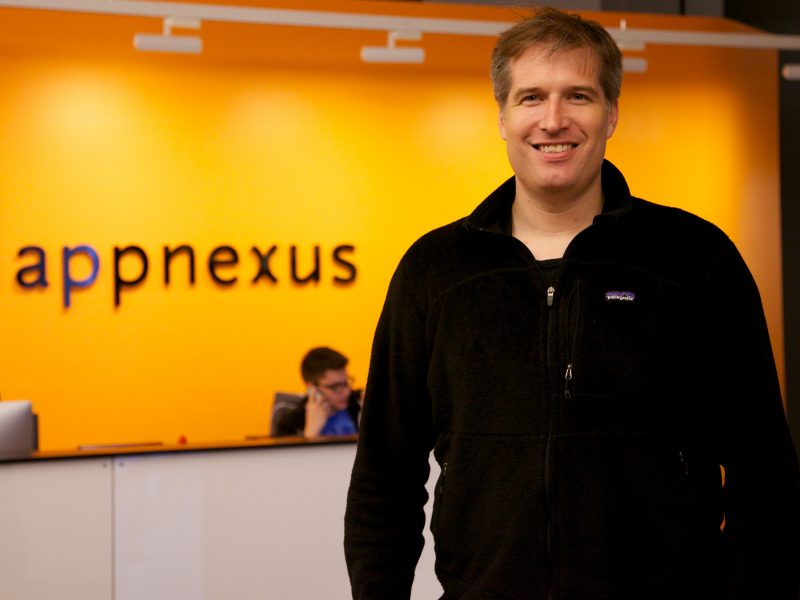- The startup Amino Payments believes that blockchain technology can help clean up digital advertising. The company has lined up support from ad tech giants like AppNexus and marketers like T-Mobile. The hope is that this tech can reduce fraudulent web ads and bring clarity to the murky ad exchange world, helping advertisers spend their budgets more effectively.
A group of ad tech heavyweights and top brands are betting that blockchain, the distributed ledger technology that underpins cryptocurrency bitcoin, can fix all that ills digital advertising.
The digital ad ecosystem has been under fire of late on a number of fronts, from the persistence of fraudulent ads (like ads on bogus websites or ads that get clicked on by bots not humans), to ads ending up in the wrong places (like next to hate videos on YouTube) to an overall lack of transparency that troubles big marketers.
The startup Amino Payments believes that elements of blockchain may be the answer to the industry’s multitude of thorny challenges. And it’s lined up some top names from the ad tech and marketing sector to test that theory.
Amino, formerly known as Curren-C, has developed a new digital payment system that borrows elements of ad tech, fintech and blockchain. Founder and CEO Will Luttrell explained how it works:
- When implemented, Amino’s tech allows ad buyers to create a digital signature authorizing their money to be spent. As ad buys occur, Amino’s tech automatically generates a digital ledger of the transaction that cannot be altered by either buyer or seller. It then tracks each time an ad runs, all the companies involved in the supply chain and how much money each company is making along the way – and ties that back to the financial record which it uses to automate payments to all parties.
Among the early test partners are AppNexus, the digital ad buying firm Dstillery, and the advertiser T-Mobile. It will officially go live October 2 with at least a dozen major brands and publishers, .
"We are essentially a payment company for digital advertising," said Luttrell. "If you control all the money, you can control a host of problems, because you control transparency."
Fraud killer?
The vision is that if digital ad buyers and sellers start adopting Amino's tech, it will become crystal clear to all where advertisers' budgets are being spent, and how many middlemen are taking a cut along the way. Luttrell says that should make it much harder for fraudsters to operate.
For example, spoofing - the practice of a fraudsters claiming to represent ad space for a big name site like CNN or the New York Times but actually selling ads on tiny no-name sites - will become very difficult if brands only pay media companies directly using Amino data. This issue is so worrisome that Google has been running a series of tests with big media companies in an attempt to gauge the scope of the problem, as Business Insider reported.

"That all goes away," said Luttrell, previously the chief technology officer at Integral Ad Science, an ad company that helps marketers keep track of where their ads run and whether they are visible to real consumers.
You might think that digital advertising would have long ago solved such seemingly fundamental issues. But for decades, the business has grappled with an ever expanding pool of data. Advertisers and publishers often have to reconcile two different sets of numbers when trying to figure out basics like how many ads were delivered during a given period of time and how much should be paid out.
Things have only gotten more complex in recent years as digital advertisers have layered on more data when running digital ads, tracking measures like ad viewabilty and scoring how brand safe the sites carrying such ads are.
Luttrell says that even as many ad tech startups promise to help advertisers steer away from unsavory sites, nothing is foolproof, and these companies can't automatically prevent advertisers from spending money with bad actors, or even help them keep track of who they are spending with. For example, the Wall Street Journal reported that Google has had to refund some advertisers who bought ads on bogus websites via its technology.
Follow the money - if you can
Besides out and out fraud in the murky digital ad world, ad space can be sold and resold thorough an increasingly fragmented and opaque supply chain -often in milliseconds via ad buying software. That reality has caused marketers like Procter & Gamble and Unilever to cut back on digital advertising, as Business Insider reported. P&G's chief digital officer Marc Prichard has been on a something of a speaking tour in 2017, during which he's decried the "crappy" digital ad ecosystem.

He's not wrong, said AppNexus CEO Brian O'Kelley, who is an early test client and also an Amino investor. "I'd wager that few if any brands are spending most of their money on reaching actual high quality eyeballs with their ads," he said. "This is trying to solve the actual problem of expressly where the money goes."
"I think you'll see real pull from the buy side and a big push in 2018," O'Kelley added. "This is potentially the most disruptive thing imaginable to hit this industry."
Kari Marshall, VP of media at T-Mobile, is cautiously optimistic. She likes the fact that Amino's technology is built to keep tabs on the supply (selling) side of the business. "There's a whole part of this industry that hasn't really had transparency," she said. "You hit a wall."
As for whether blockchain represents a potential turning point, "It's going to depend on how they can scale," she said. "It sounds great. But there's always the question of what's in it for the sellers."
Misaligned incentives
Getting an entire industry to change the way it pays its bills is no small feat. O'Kelley thinks that as more big advertisers and companies start using Amino, they'll put pressure on others to comply. Yet one ad tech insider expressed some doubts about whether such motivations will win out, since for some ad tech vendors - which may take sizable margins from fairly basic ad transactions - murkiness works to their advantage.
"If there is no adoption, then whether blockchain is cool tech or advanced tech or not, it doesn't matter in the slightest," this person said. "It won't be used because people don't want to use it. They'd rather keep the current way of business so they can make more money non-transparently."
Yet Luttrell thinks that he's got a big carrot for ad tech companies: they should get paid faster. According to Luttrell, many ad tech companies end up fronting the advertiser when executing media buys on their behalf. Since using Amino theoretically eliminates alot of the billing back and forth between ad buyers and sellers, nobody can drag their feet on making payments. That should be very appealing to reputable ad tech firms.
Amino is the not the only startup attempting to marry blockchain and digital ads. The list of startups includes MetaX, Papyrus, and the New York Interactive Advertising Exchange.
But what Amino has going for it is that Luttrell and his team are "from this world," said Sam Bloom, CEO of the ad agency Camelot, which is testing the tech with several clients. "They're insiders. They'll understand the tech, and the speed needed. They know that ad tech companies can't police themselves.
"This is about money," Bloom added. "We have to change the flow of money and track it."

